Сontrasting with a network of city streets that are often shaded due to their narrow width, plazas bring light and air into the urban landscape. Today, designers and architects adapt the plaza typology to such spaces as the roofs of underground parking garages and urban sites that emerged from the demolition of urban renewal. The result is always the same: a multipurpose spatial volume that serves the community offering the citizens a space for social interaction, significantly enriching the cityscape.
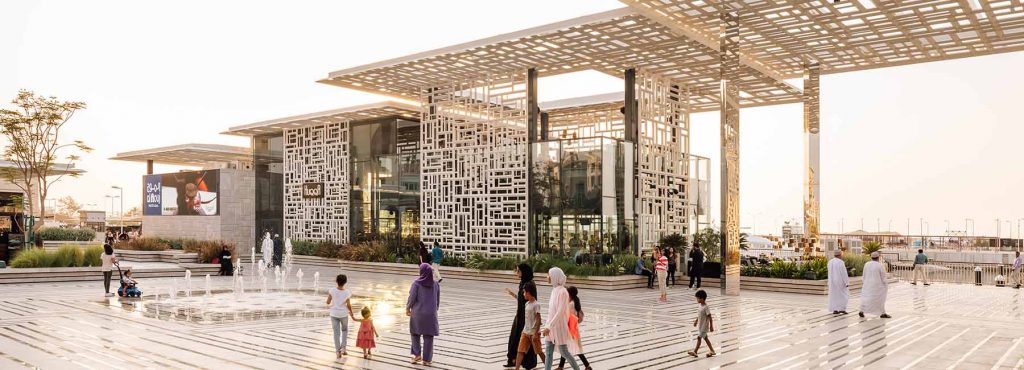
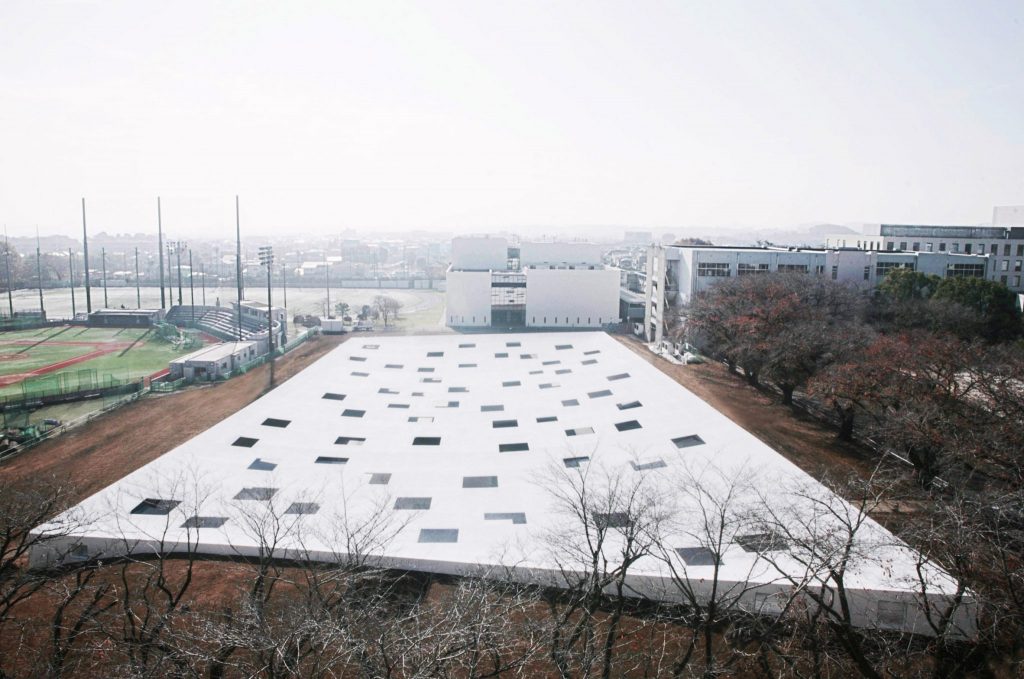
Plaza on the campus of the Kanagawa Institute of Technology by Junya Ishigami
Japanese architect Junya Ishigami was approached by the Kanagawa Institute of Technology in Japan with a task to design a breakout space for social interaction the institution lacked. Intended to complement the campus’ architecture, the resulting multipurpose covered plaza appears from outside as a solid mass that is partially submerged in its site. Aiming to evoke a landscape stretching towards a horizon line, the architect designed the floor to curve up and meet the slightly bowed roof. The roof height rises from around 2.2 metres to a maximum of 2.8 metres, in line with typical Japanese housing standards.
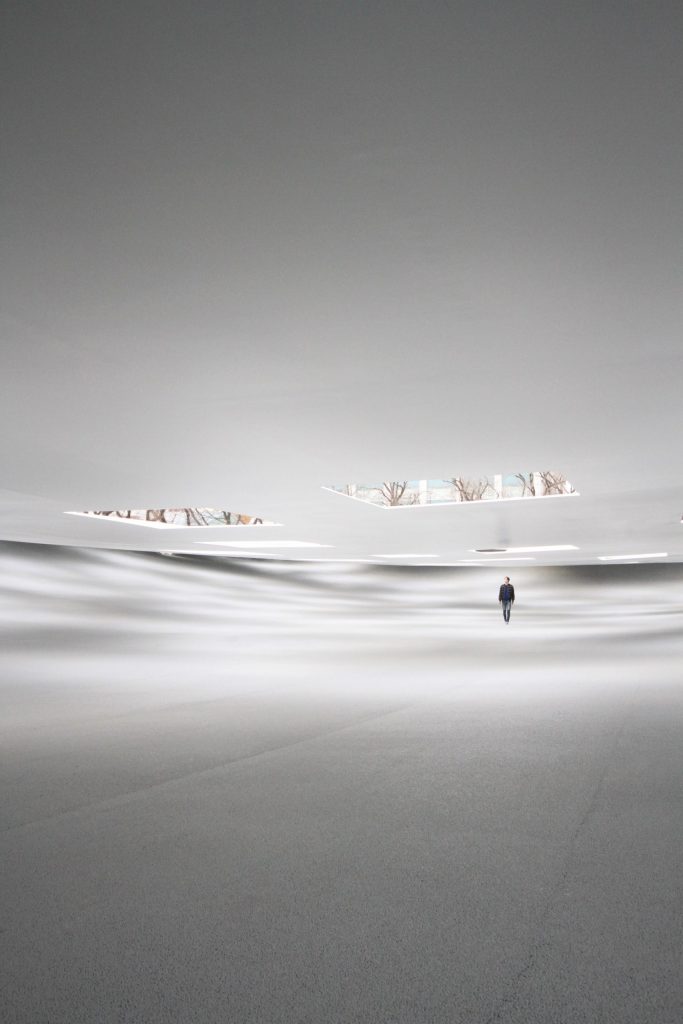
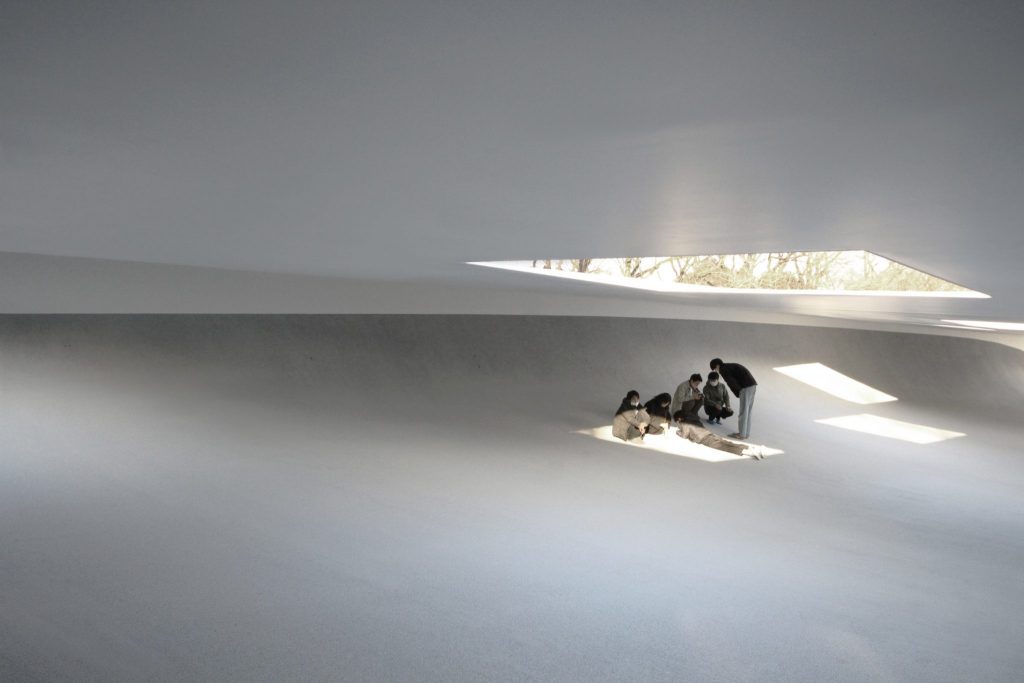
Plaza on the campus of the Kanagawa Institute of Technology by Junya Ishigami
The plaza is designed to provide a space where students can meet and sit on the ground to chat, eat lunch or take a nap, but it also offers an array of other potential uses. For example, it can be used to host temporary stalls during campus festivals or to showcase student projects.
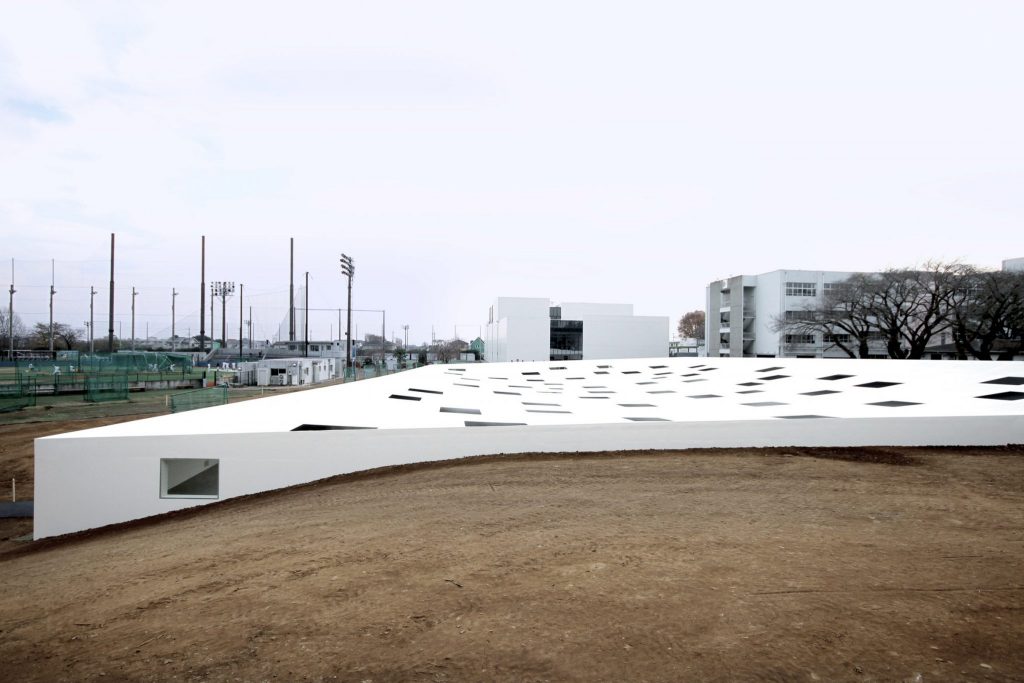
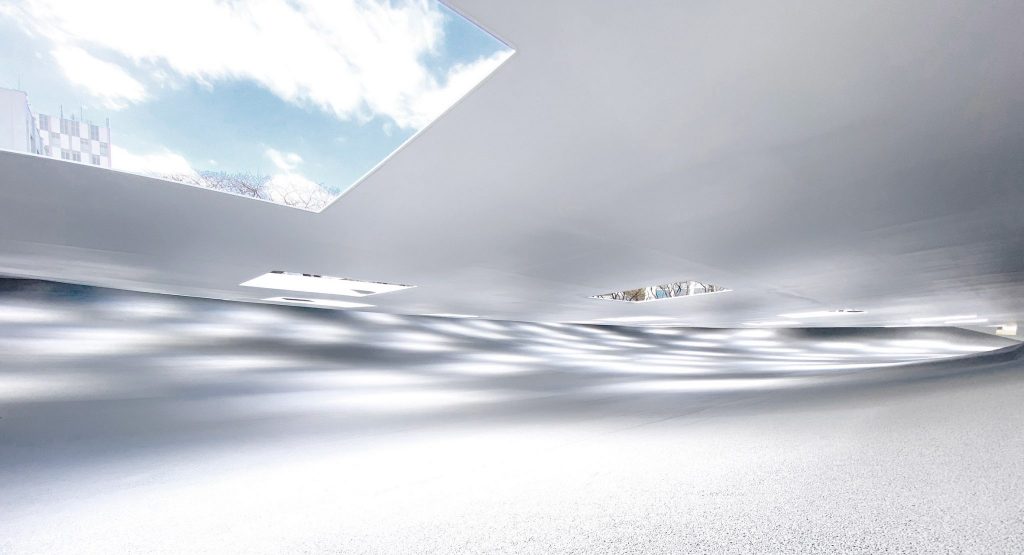
Plaza on the campus of the Kanagawa Institute of Technology by Junya Ishigami
Entrances on two sides provide access to the plaza floor, which is uninterrupted by any structural supports. The roof is formed of a single 12-millimetre-thick steel surface that rests on four 250-millimetre-thick external walls. The tension exerted on the walls is partially reduced by a network of ribs that function like compression rings.
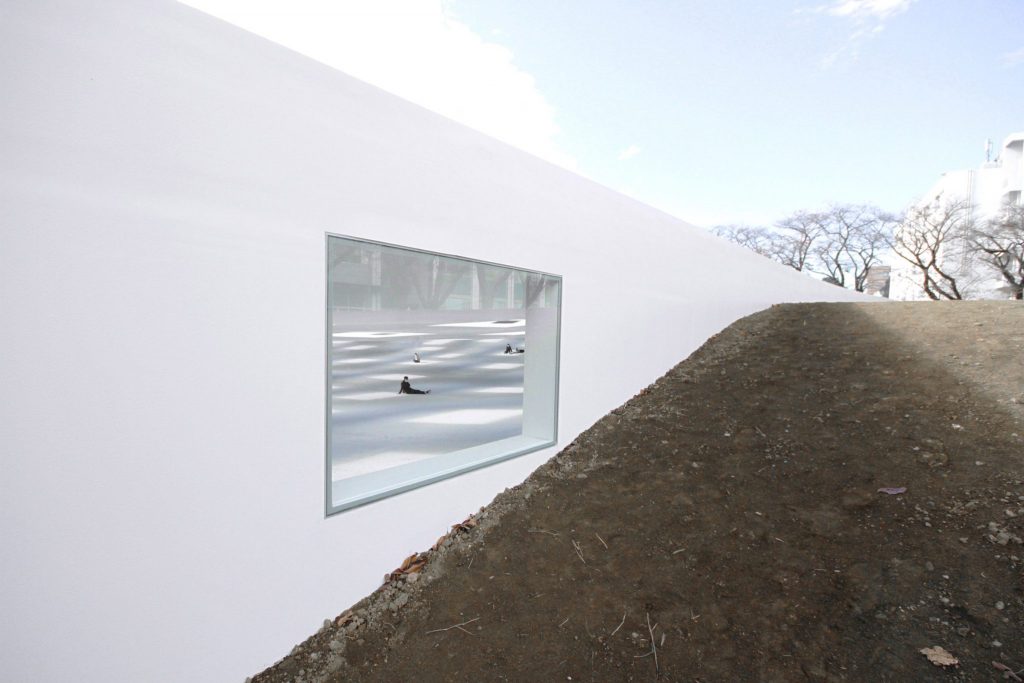
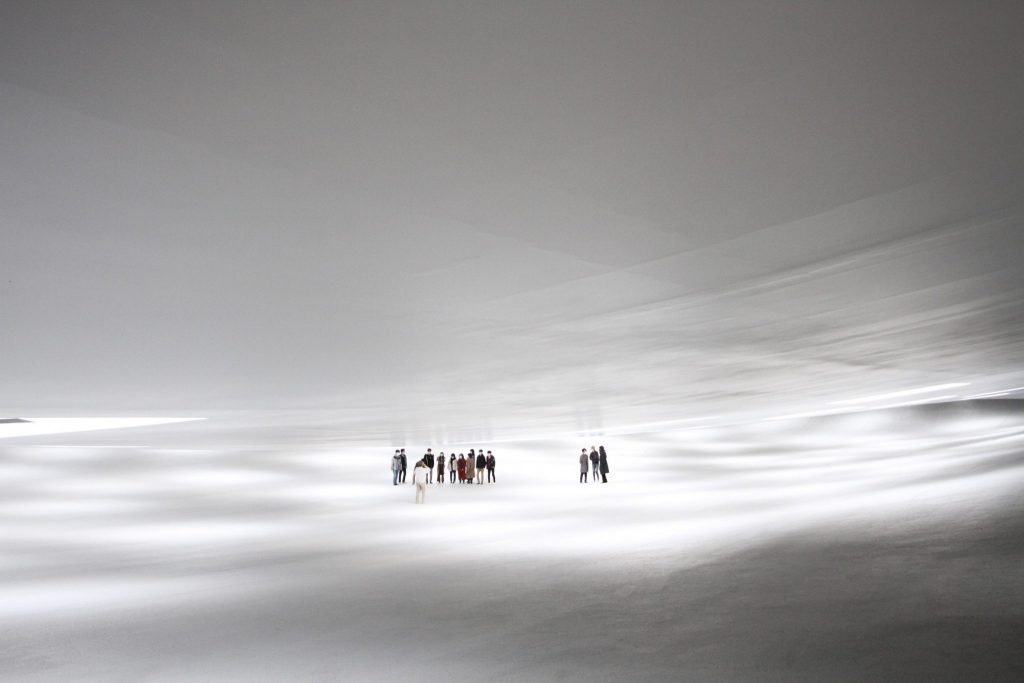
Plaza on the campus of the Kanagawa Institute of Technology by Junya Ishigami
Thanks to 59 rectangular openings cut into the roof and crisp white walls, this artificial environment possesses the ever-changing quality of natural spaces, allowing sunlight, wind and rain to enter the structure. On sunny days, a pattern of light and shadow is formed on the floor, while on rainy days, columns of precipitation punctuate the interior, which reverberates with the sound of raindrops bouncing off the metal roof. To keep the plaza dry and free of puddles, the floor is covered with a permeable asphalt that allows water to absorb instantly and flow through to the earth below. From the outside, the windows provide glimpses of the sheltered interior.
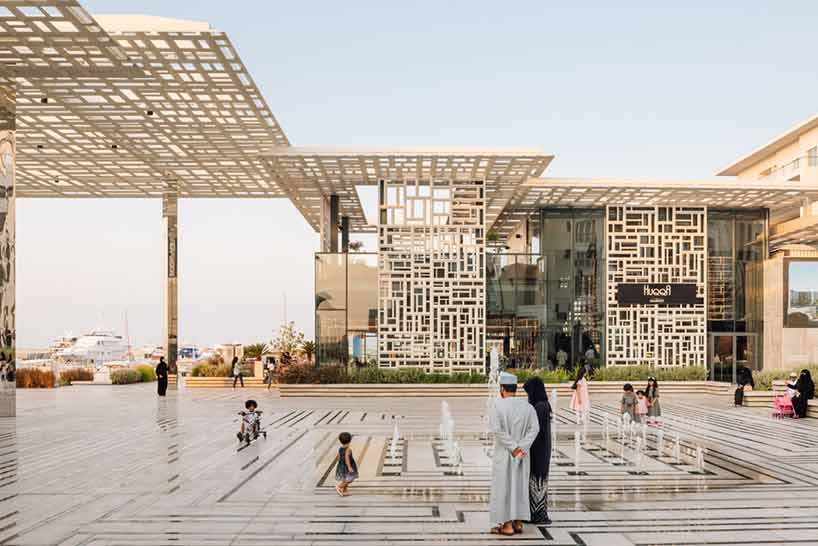
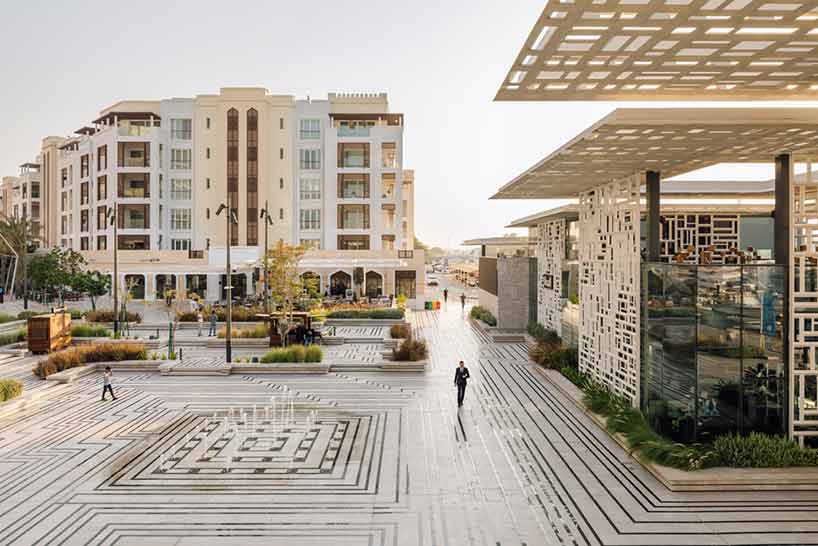
Marsa Plaza by ACME (also header image)
Marsa Plaza in the Al Mouj quarter of Oman’s port capital, Muscat, has been conceived by London-based studio ACME as the focal part of the marina district, linking the main boulevard to the seafront promenade. Protected from the intense sunlight by trees and overlapping canopies, the plaza provides a shaded place, seating terraces and an amphitheater for performances for the wider public of Muscat.
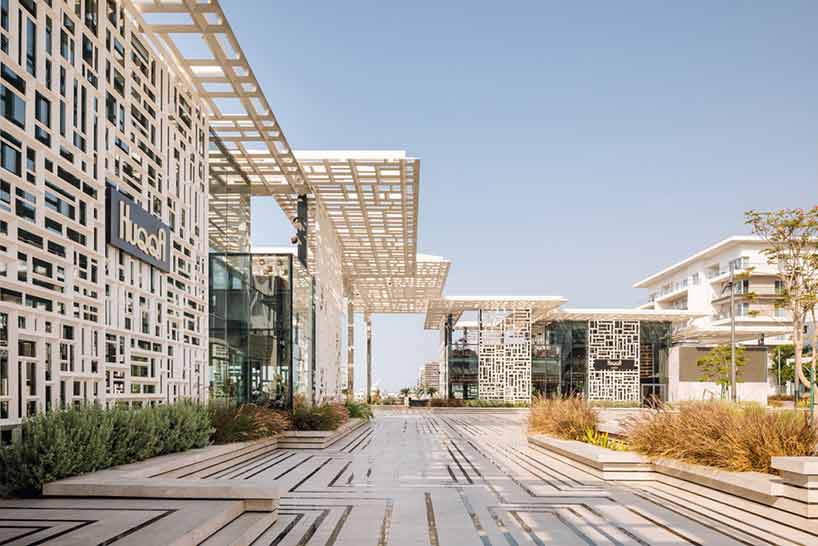
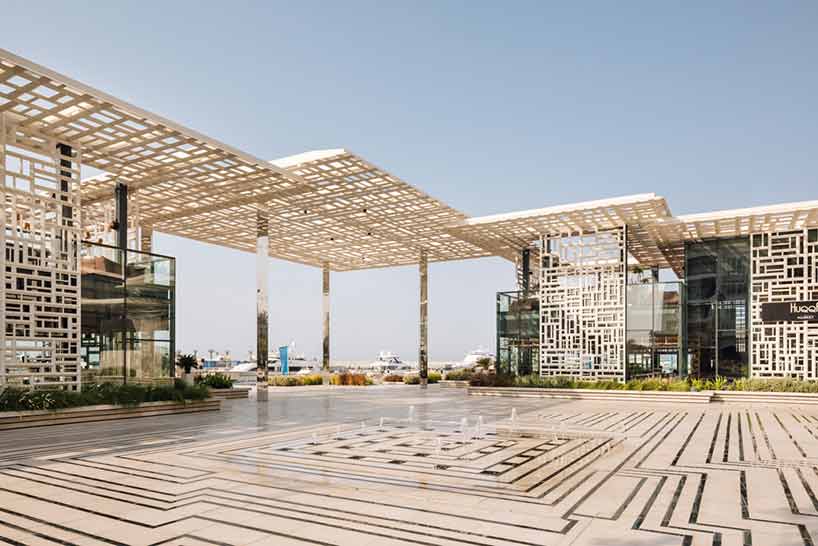
Marsa Plaza by ACME
The materiality and graphics of the plaza have been derived from the local context, using local Omani stone, desert rose marble and black granite, and traditional mashrabiya latticework patterns developed from traditional geometries and vernacular types.
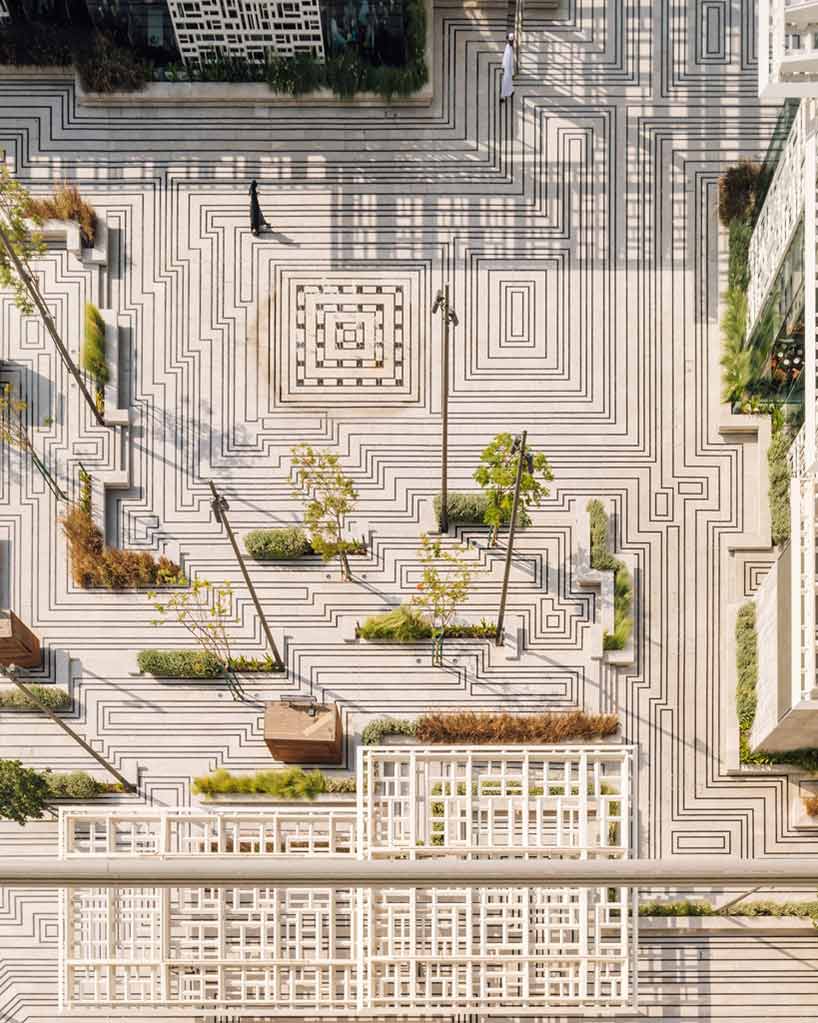
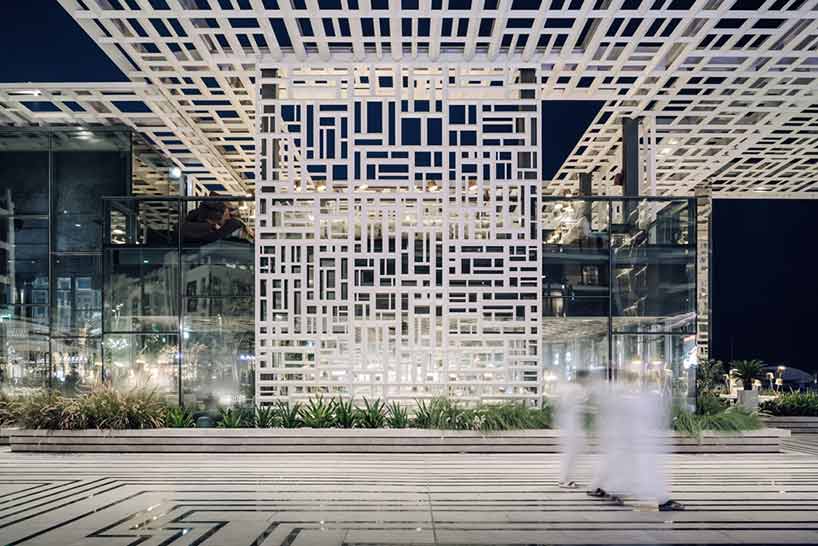
Marsa Plaza by ACME
The stepped levels of the square are ramped to bring the local city closer to the water’s edge and to form a natural amphitheater around the central water feature, while the latticed screens and canopies made of lightweight aluminum provide shading for the outside seating areas. The canopies are lowest away from the sea, rising up towards the south-most corner where the largest one covers a performance area and frames views towards the water.
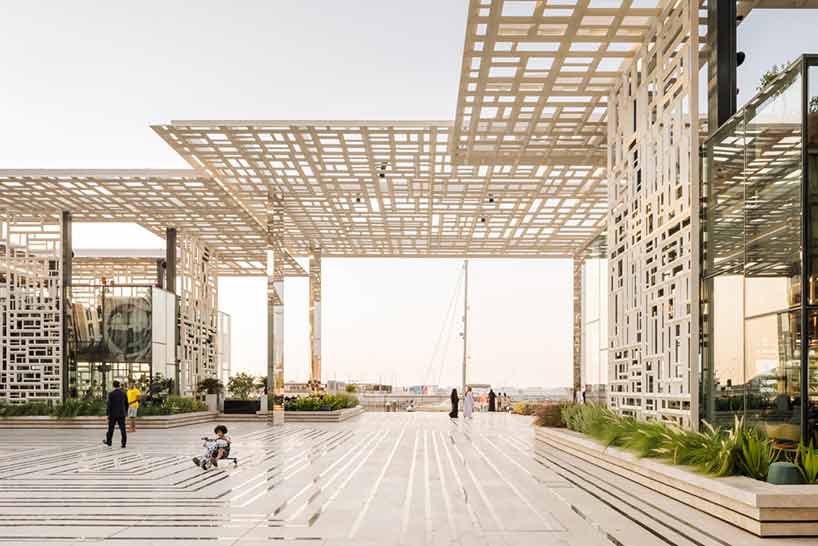
Marsa Plaza by ACME
Behind some of the shading screens, there are two restaurants visually divided into three separate volumes: a double height glazed volume, a single story volume with roof terrace and a stone-clad kitchen volume.
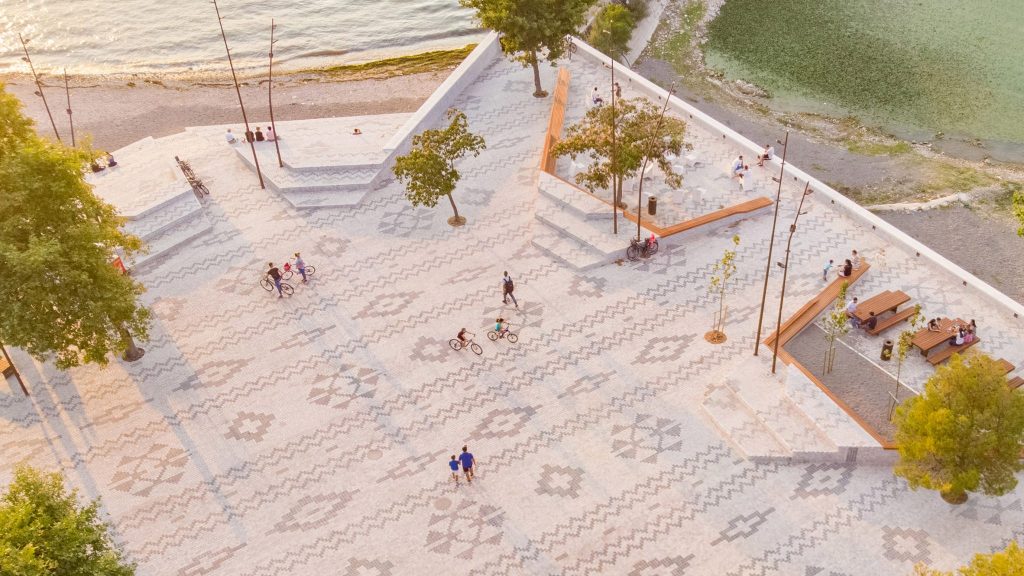
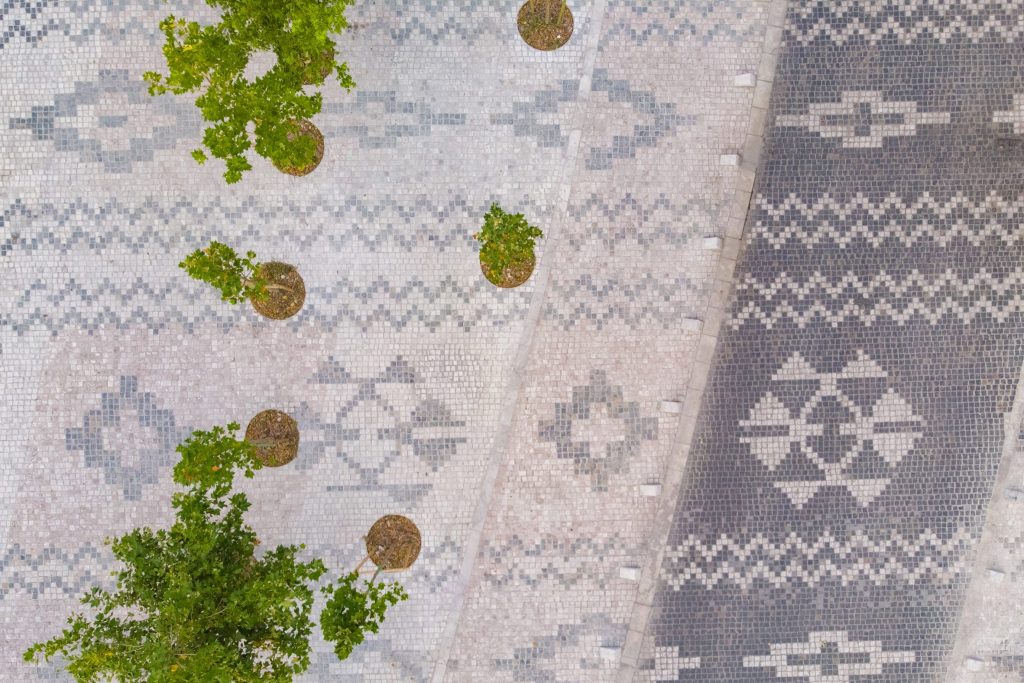
Shiroka Square by Casanova + Hernandez
Designed by Rotterdam-based studio Casanova + Hernandez, the Albanian Carpet in the village of Shiroka on the shores of Shkodra Lake, which is near the border with Montenegro, replicates a traditional carpet pattern reimagined using black and white granite blocks. The landscaping project aims to rebuild the feeling of belonging and attachment to the public space previously occupied by private houses illegally constructed in 1990s after the fall of communism.
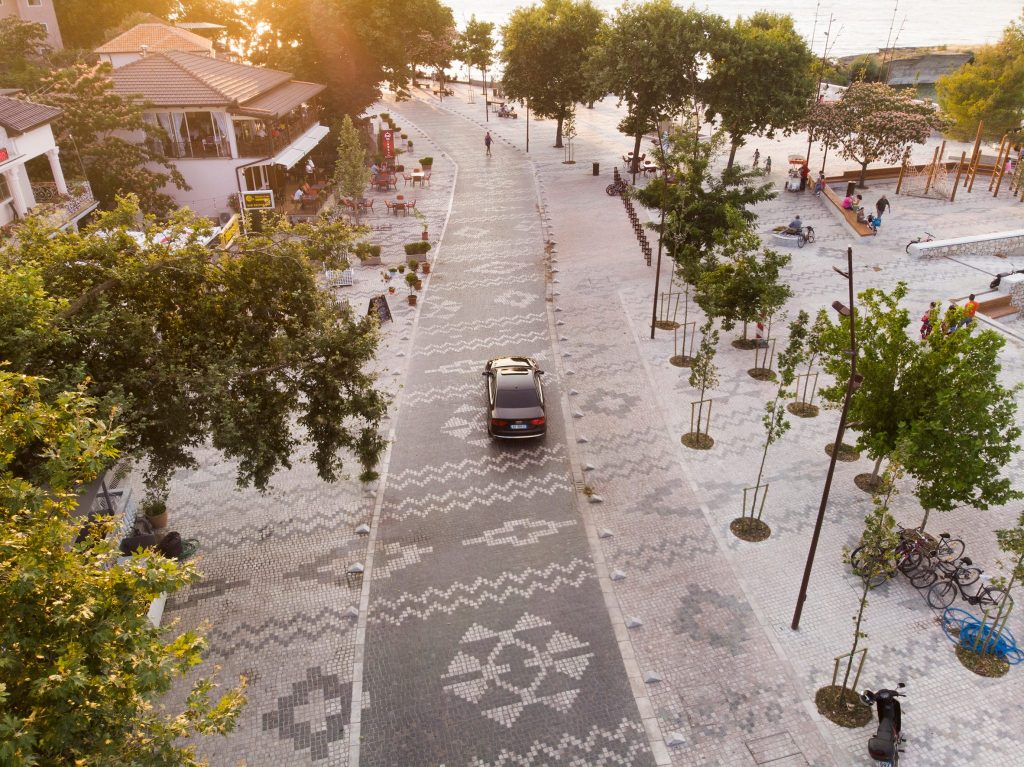
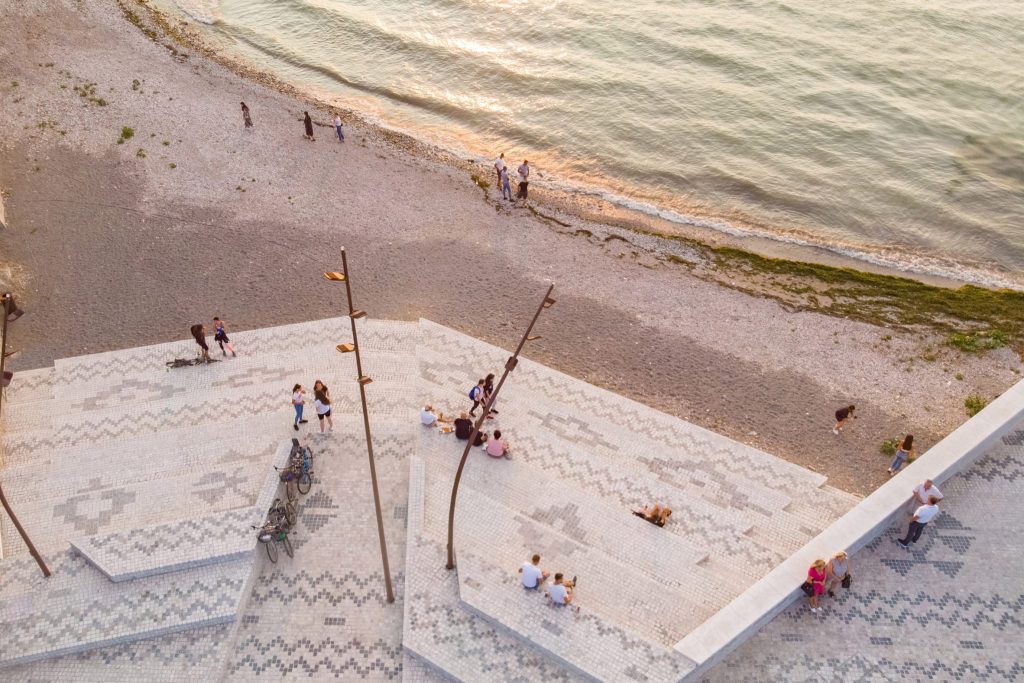
Shiroka Square by Casanova + Hernandez
The square also evokes the feeling of a house consisting of rooms with specific functions. The layout of the open-air zones are informed by an oda, a room typically used in traditional Albanian homes to entertain guests.
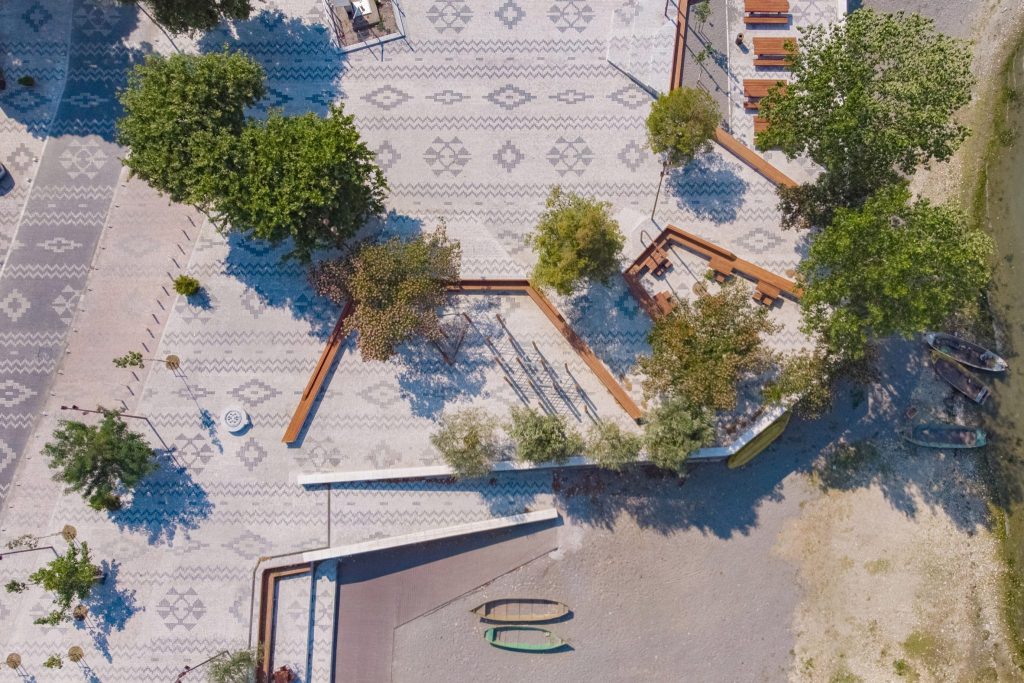
Shiroka Square by Casanova + Hernandez
The studio reinterpreted this room, which typically features low benches lining the space on three sides, by introducing U-shaped benches made from wood. This enables visitors to enjoy the views over the lake and stimulates interaction between them, offering an array of different uses such as a playground room, picnic room, lounge room, amphitheater and the fishermen’s room. Besides, the stone paving in these “rooms” serves as seating, when the plaza is used as an arena for performances or events.
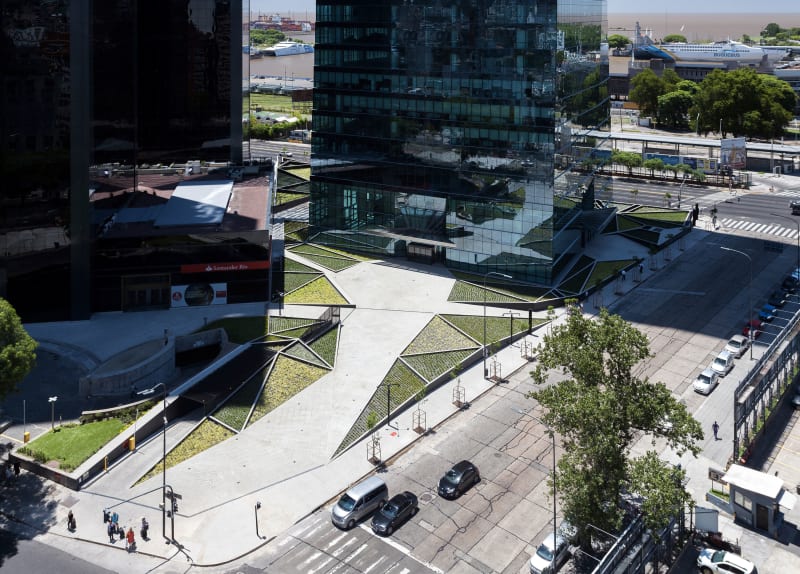
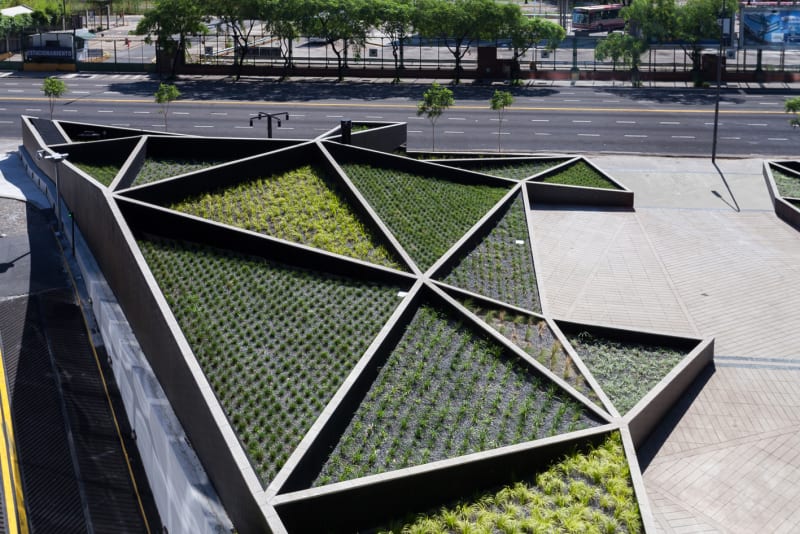
Plaza Catalinas by Adamo Faiden
Argentinian studio Adamo Faiden, founded by Sebastián Adamo and Marcelo Faiden, has designed a stepped public plaza at the foot of a glass tower in Catalinas Norte, the financial centre of Buenos Aires. Named Plaza Catalinas, the space encompasses an undulating landscape covering three levels of an underground parking, which serves the densely built area.
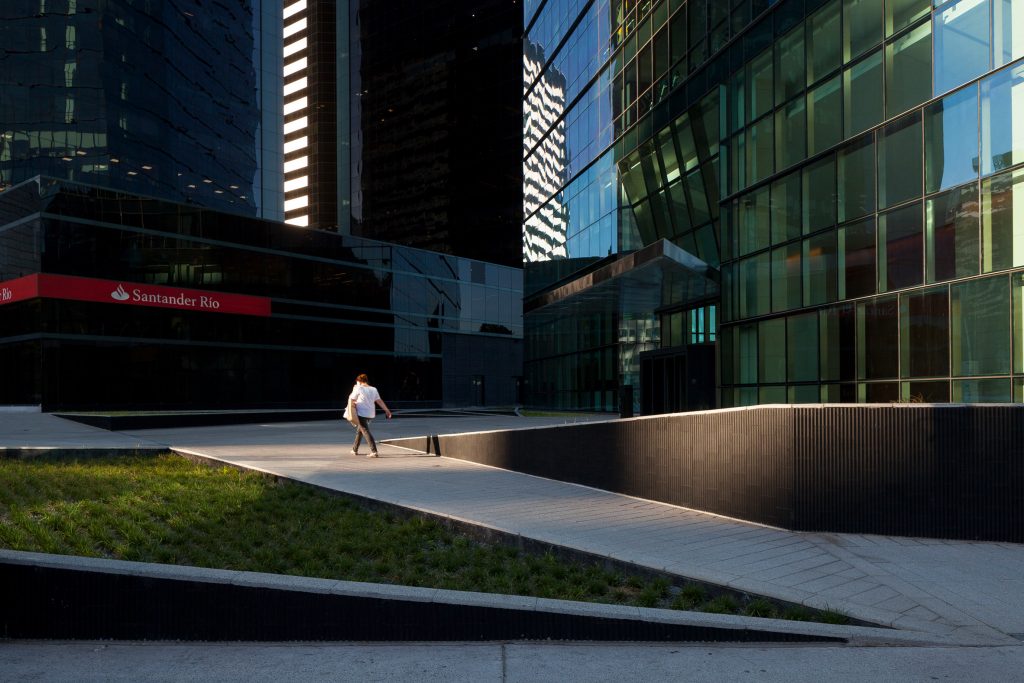
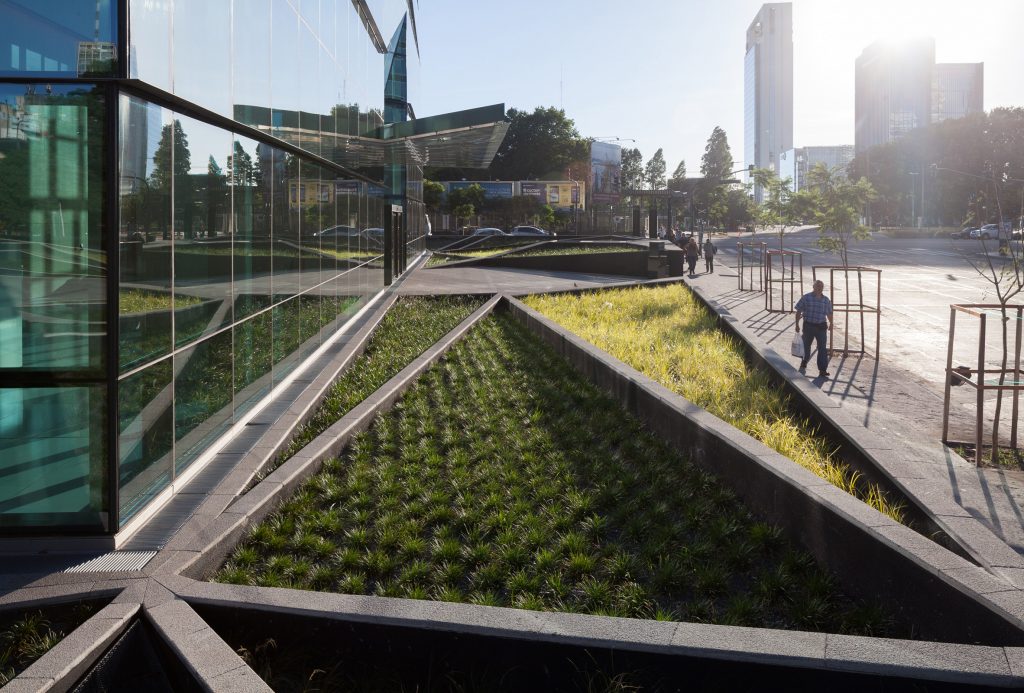
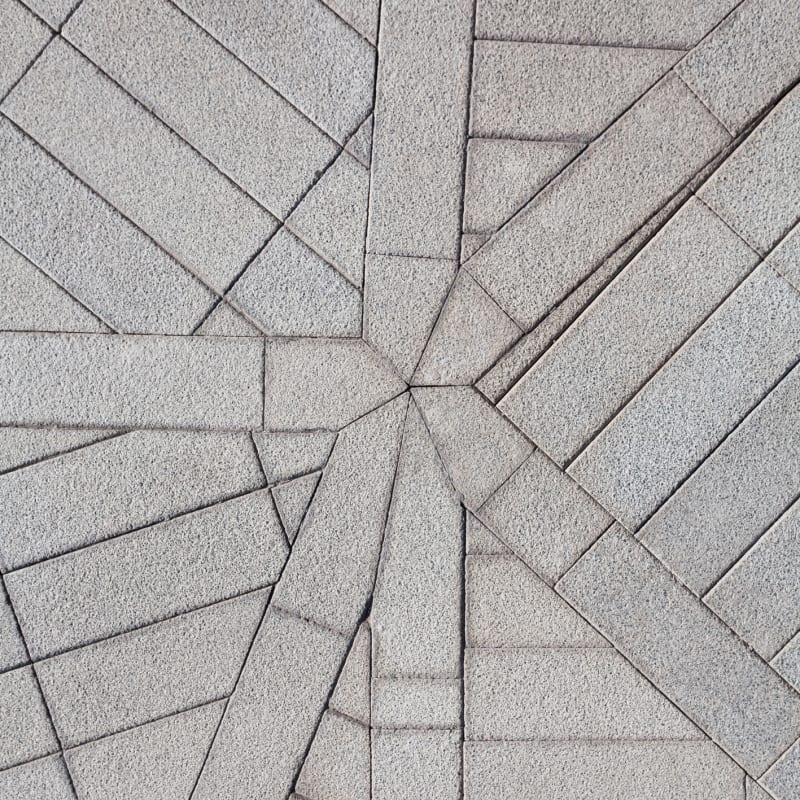
Plaza Catalinas by Adamo Faiden
Varying in surface heights and finishes, the irregular layout of the square is made up of triangular segments of vegetation, its ambiguity contrasting with the orthogonal footprint of the tower. The plaza also forms an unconventional walkway finished in paving positioned at a variety of angles, which creates a new pedestrian route through the business district without dictating a specific direction walkers should follow.